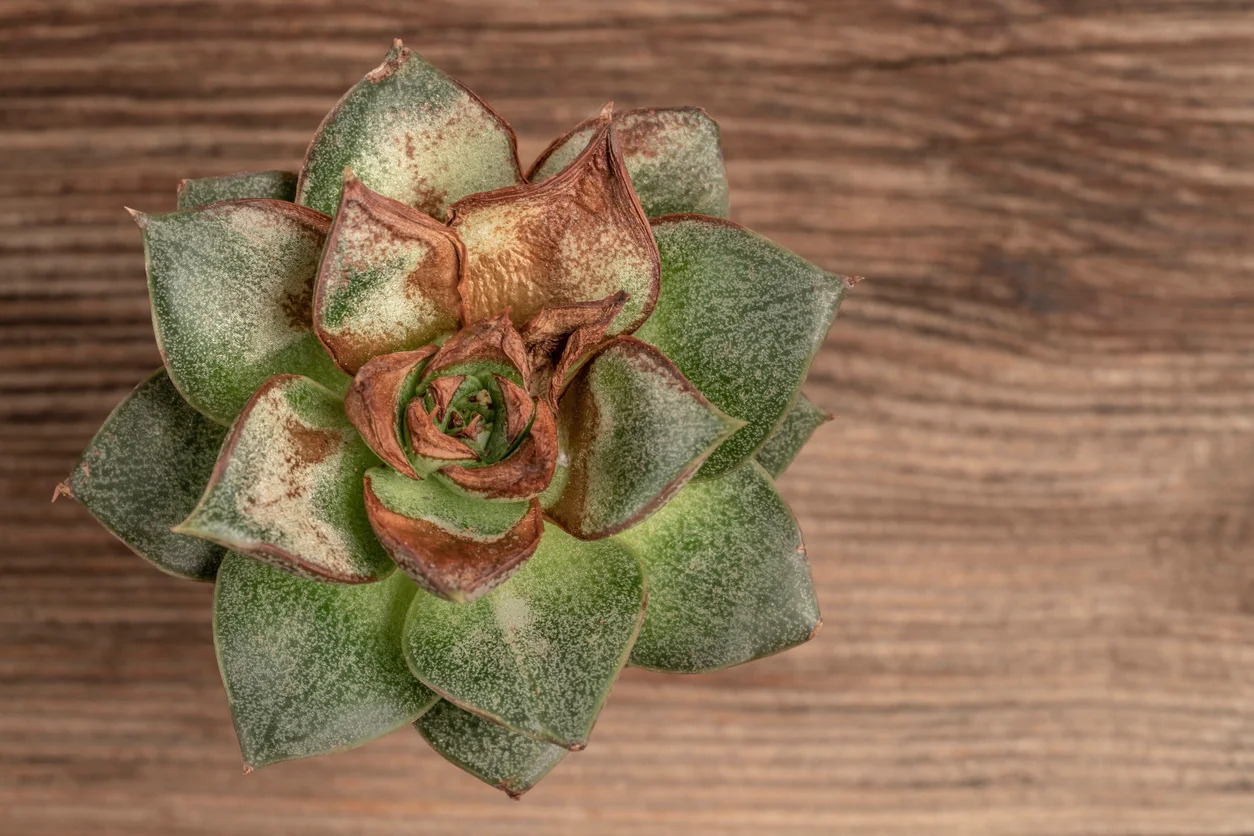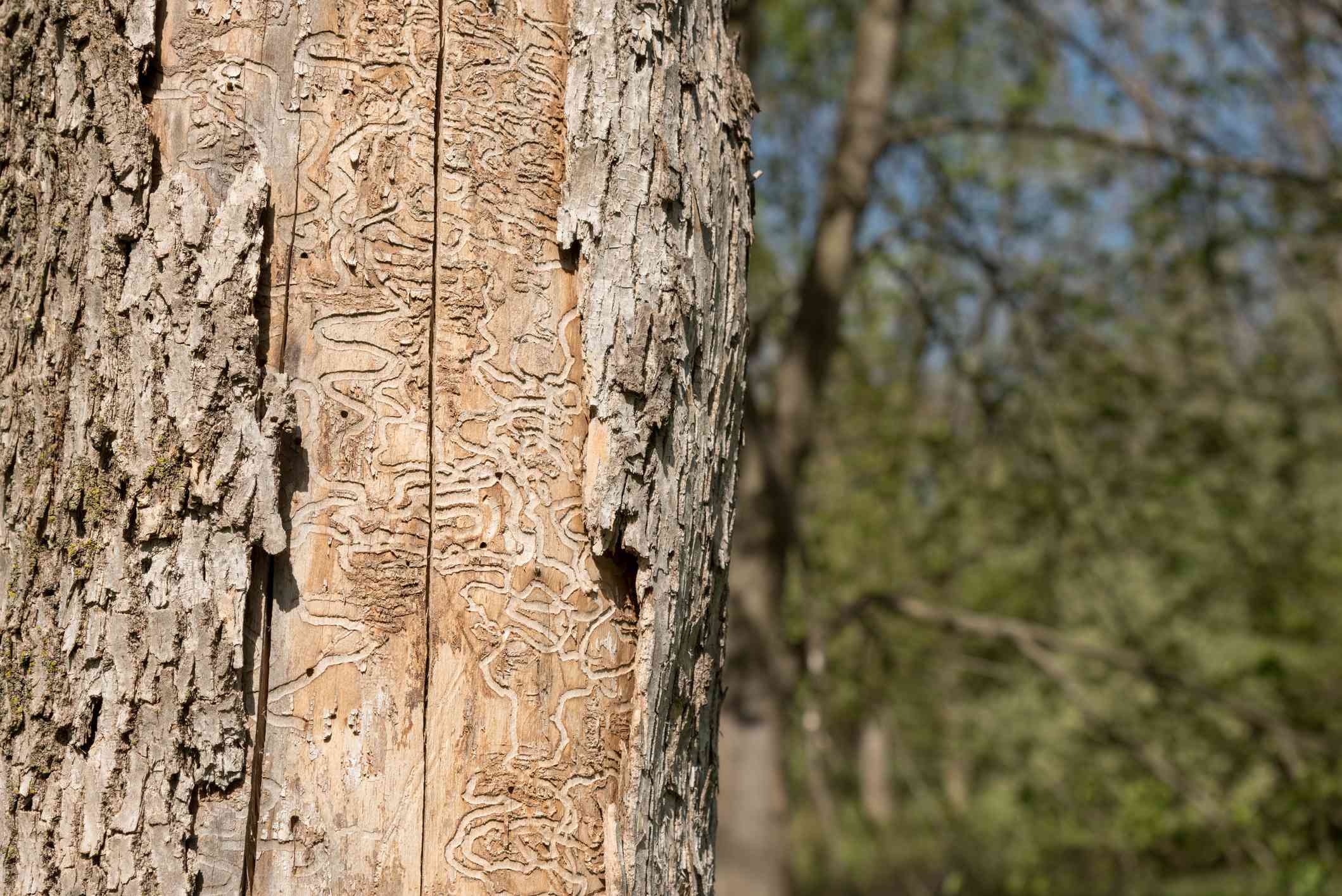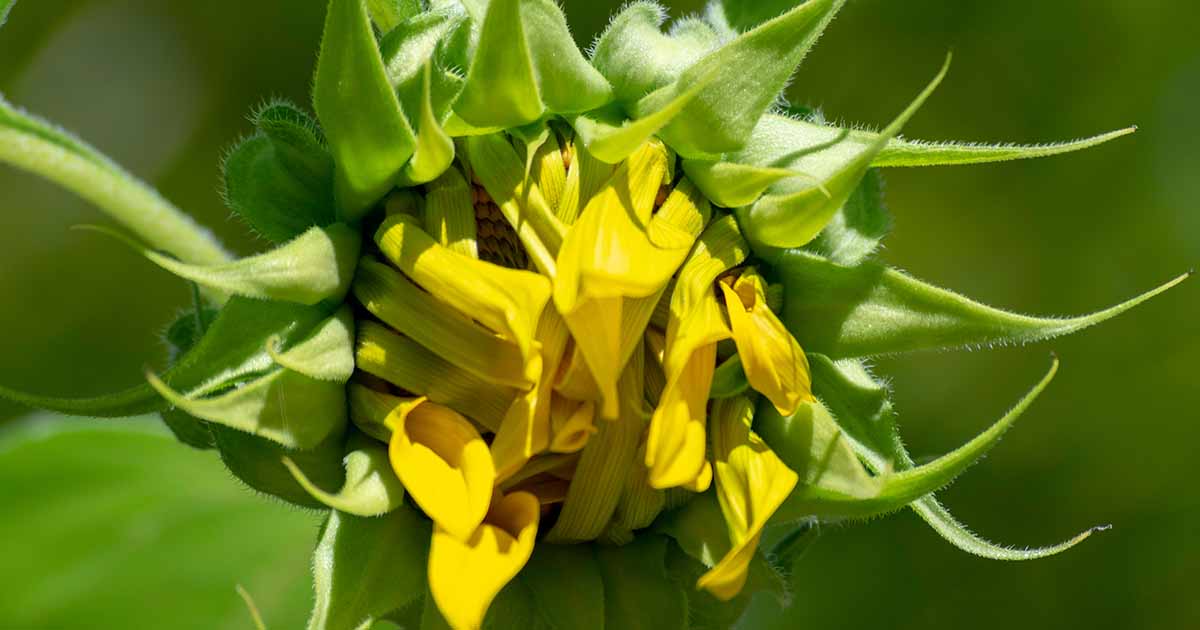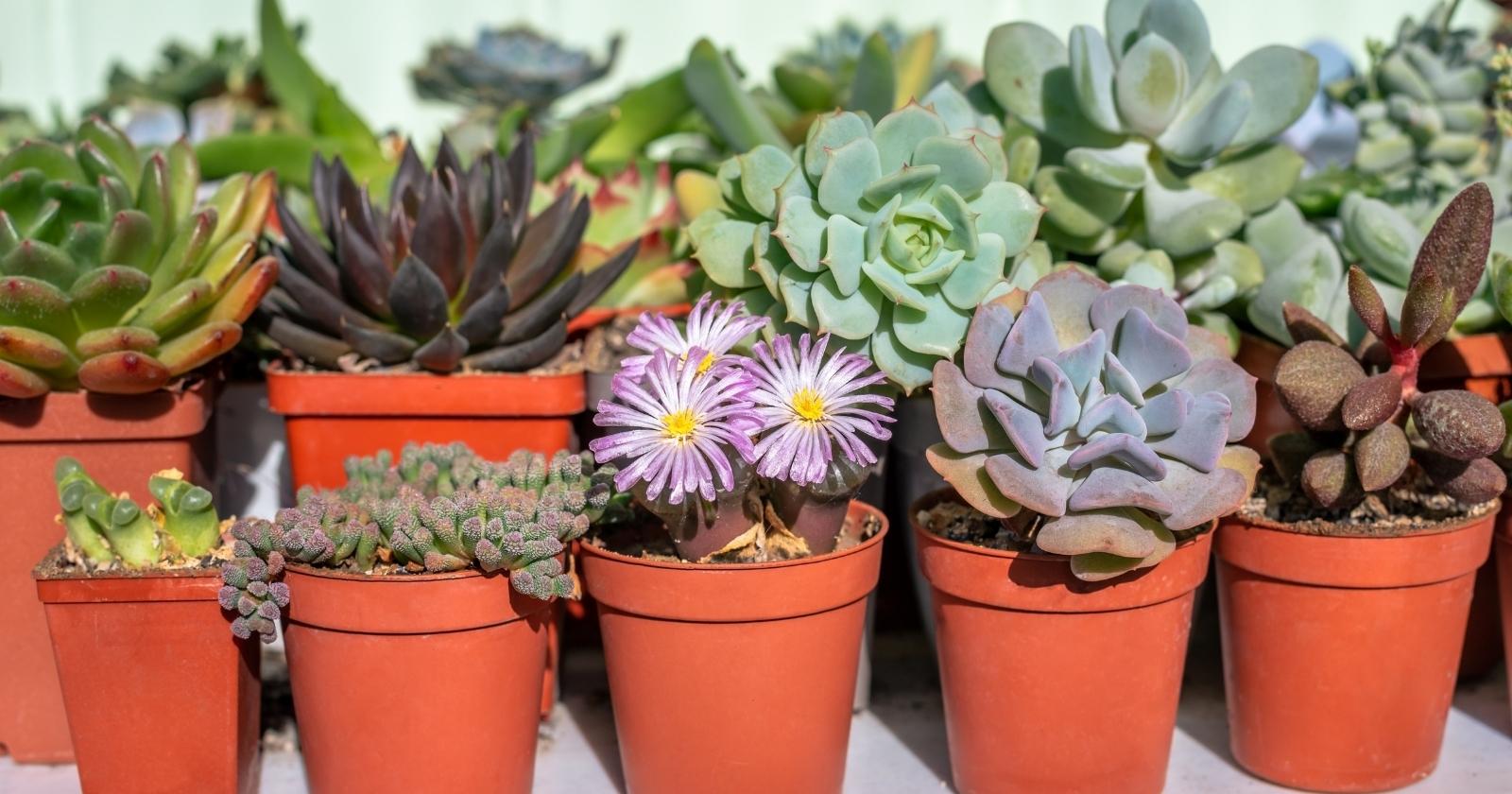Home>Types of Gardening>Ornamental Gardening>Why Are My Succulents Dying


Ornamental Gardening
Why Are My Succulents Dying
Published: December 25, 2023
Discover why your succulents may be struggling and learn essential ornamental gardening tips to help them thrive. Explore common issues and expert advice to keep your succulents healthy and vibrant.
(Many of the links in this article redirect to a specific reviewed product. Your purchase of these products through affiliate links helps to generate commission for Chicagolandgardening.com, at no extra cost. Learn more)
Table of Contents
**
Introduction
**
Succulents, with their captivating beauty and low-maintenance allure, have become a popular choice for both seasoned gardeners and novices alike. These diverse and resilient plants come in a stunning array of shapes, colors, and sizes, making them a delightful addition to any indoor or outdoor space. However, despite their reputation for being hardy, many individuals find themselves puzzled and disheartened when their succulents begin to show signs of distress or even perish. If you've ever wondered, "Why are my succulents dying?" you're not alone.
Understanding the unique needs of succulents is crucial to ensuring their vitality and longevity. From the impact of watering habits to the significance of proper soil and light exposure, there are various factors that can influence the well-being of these captivating plants. By delving into the common reasons for succulent deaths and learning how to address these challenges, you can cultivate a thriving succulent garden that brings joy and tranquility to your living space.
As we embark on this exploration of succulent care, it's important to approach the topic with an open mind and a willingness to adapt our gardening practices. By embracing the art of nurturing succulents, we can unlock the secrets to fostering their resilience and beauty, creating a harmonious environment where these enchanting plants can flourish. Let's embark on this journey to unravel the mysteries behind succulent care and discover the keys to preventing succulent fatalities.
Understanding Succulents
Before delving into the specific reasons behind succulent deaths, it’s essential to grasp the fundamental characteristics of these remarkable plants. Succulents are renowned for their ability to store water in their leaves, stems, or roots, allowing them to thrive in arid environments where water is scarce. This unique adaptation enables succulents to withstand prolonged periods of drought, making them exceptionally resilient and well-suited for individuals with busy lifestyles or limited gardening experience.
One of the defining features of succulents is their diverse range of shapes and sizes, from the compact rosettes of Echeveria to the cascading tendrils of String of Pearls. This rich variety not only adds visual interest to any space but also presents an opportunity for enthusiasts to curate an eclectic and captivating collection of succulents.
Furthermore, succulents exhibit a remarkable ability to thrive both indoors and outdoors, provided they receive adequate light and proper care. Their adaptability makes them an ideal choice for adorning windowsills, desks, garden beds, and even vertical gardens, offering endless possibilities for incorporating these charming plants into diverse settings.
Understanding the intrinsic qualities of succulents, including their water-storing mechanisms, diverse appearances, and adaptability, lays the foundation for effective succulent care. By recognizing and appreciating the resilience and versatility of these plants, we can cultivate a deeper connection with them and gain insights into the specific conditions that promote their well-being.
Common Reasons for Succulent Deaths
Despite their reputation for resilience, succulents are susceptible to a range of threats that can compromise their health and vitality. Identifying these common reasons for succulent deaths is essential for safeguarding these plants and ensuring their long-term flourishing.
One of the primary culprits behind succulent fatalities is overwatering. While it may seem counterintuitive, succulents are highly sensitive to excess moisture, which can lead to root rot and other detrimental conditions. Overzealous watering can disrupt the delicate balance of a succulent’s water-storing tissues, ultimately causing irreparable harm.
Conversely, underwatering poses a significant risk to succulents, particularly for individuals who underestimate the plants’ water requirements. Insufficient hydration can cause succulents to dehydrate and wither, robbing them of their characteristic plumpness and vibrancy.
Poor drainage exacerbates the perils of overwatering, as it impedes the efficient removal of excess moisture from the soil. Without proper drainage, succulents are left vulnerable to the perils of waterlogged conditions, increasing the likelihood of root rot and other moisture-related ailments.
Moreover, inadequate light exposure can spell trouble for succulents, as these plants rely on sunlight to fuel their photosynthetic processes and maintain their robust growth. Insufficient light can cause succulents to become etiolated or stretched, detracting from their natural beauty and resilience.
Furthermore, succulents are not immune to the threats posed by pests and diseases. Common invaders such as aphids, mealybugs, and spider mites can wreak havoc on succulents, while fungal infections and other diseases can compromise their well-being.
Additionally, the composition of the soil in which succulents are planted plays a pivotal role in their overall health. Inappropriate soil mixtures can hinder drainage, impede root development, and disrupt the delicate balance of nutrients essential for succulent growth.
By familiarizing ourselves with these common reasons for succulent deaths, we can take proactive measures to mitigate these risks and create an optimal environment for our beloved succulents to thrive.
Overwatering
Overwatering stands as a pervasive threat to the well-being of succulents, often leading to dire consequences that compromise their health and vitality. Despite their water-storing adaptations, succulents are highly sensitive to excessive moisture, making it crucial for gardeners to exercise restraint when it comes to watering these plants.
One of the primary mechanisms through which overwatering inflicts harm upon succulents is by triggering root rot. When the soil surrounding a succulent becomes saturated with water, the roots are deprived of essential oxygen, leading to their deterioration and eventual demise. As the roots succumb to rot, the plant’s ability to absorb water and nutrients is severely compromised, setting off a domino effect of decline.
Moreover, overwatering can disrupt the delicate equilibrium of a succulent’s water-storing tissues, causing them to swell and become engorged with excess moisture. This aberration in the plant’s physiology not only detracts from its visual appeal but also undermines its resilience and capacity to endure harsh environmental conditions.
Furthermore, the susceptibility of overwatered succulents to fungal infections and other diseases cannot be overlooked. The perpetually damp environment created by excessive watering provides an ideal breeding ground for pathogens, increasing the likelihood of afflictions that can ravage the plant’s tissues and impede its growth.
To mitigate the perils of overwatering, it is imperative to adopt a mindful and restrained approach to watering succulents. By allowing the soil to dry out completely between waterings and ensuring that excess water can freely drain from the pot, gardeners can safeguard their succulents from the detrimental effects of overhydration.
Moreover, selecting well-draining soil mixes and containers equipped with drainage holes can further fortify succulents against the hazards of overwatering, promoting a conducive environment for their flourishing. By cultivating an awareness of the risks associated with overwatering and implementing prudent watering practices, gardeners can nurture thriving succulents that exude vitality and beauty.
Underwatering
While succulents are renowned for their ability to withstand prolonged periods of drought, underwatering poses a significant risk to their well-being and can manifest in visible signs of distress. Insufficient hydration deprives succulents of the moisture essential for sustaining their water-storing tissues, leading to a range of detrimental effects that compromise their vitality.
One of the most conspicuous indicators of underwatering is the shriveling and wilting of succulent leaves. When deprived of adequate moisture, succulents respond by reducing the volume of their water-storing tissues, causing their leaves to lose turgidity and appear desiccated. This visible manifestation of distress serves as a poignant reminder of the critical importance of meeting succulents’ water requirements.
Furthermore, prolonged periods of drought can impede the growth and development of succulents, hindering their capacity to thrive and flourish. Without sufficient moisture, succulents may struggle to produce new growth, resulting in stunted or withered appearances that detract from their natural beauty.
Additionally, the resilience of underwatered succulents is compromised, rendering them more susceptible to environmental stressors and pest infestations. Succulents that are deprived of adequate hydration are less equipped to withstand the rigors of their surroundings, making them more vulnerable to the challenges posed by suboptimal growing conditions.
To address the perils of underwatering, it is crucial for gardeners to develop a keen understanding of their succulents’ water requirements and to monitor their hydration needs diligently. By observing the visual cues of underwatering, such as shriveled leaves and diminished turgidity, gardeners can intervene and provide the necessary moisture to rejuvenate their succulents.
Moreover, establishing a consistent watering routine that aligns with the seasonal fluctuations in succulents’ growth patterns can help prevent the risks associated with underwatering. By tailoring their watering practices to accommodate the changing needs of succulents throughout the year, gardeners can foster robust and resilient plants that radiate health and vibrancy.
Poor Drainage
The significance of proper drainage in succulent care cannot be overstated, as inadequate drainage can precipitate a cascade of challenges that compromise the health and longevity of these resilient plants. Succulents, with their low tolerance for excess moisture, are particularly vulnerable to the perils of poor drainage, making it essential for gardeners to address this issue proactively.
One of the primary repercussions of poor drainage is the onset of root rot, a pervasive ailment that can inflict irreparable harm upon succulents. When water accumulates in the soil and fails to drain effectively, the roots of succulents are subjected to prolonged periods of saturation, depriving them of the oxygen essential for their survival. This oxygen deprivation sets the stage for the proliferation of root-rotting pathogens, leading to the deterioration of the plant’s root system and impeding its capacity to absorb water and nutrients.
Furthermore, the accumulation of stagnant water in poorly drained soil creates an environment conducive to the proliferation of fungal infections and other diseases. Succulents that are subjected to perpetually damp conditions are at heightened risk of succumbing to pathogens that can compromise their tissues and impede their growth.
Moreover, the structural integrity of succulents can be compromised by poor drainage, as prolonged exposure to waterlogged soil can lead to the weakening and destabilization of their root systems. This can impede the plant’s ability to anchor itself securely and absorb essential nutrients from the soil, exacerbating the detrimental effects of poor drainage.
To mitigate the risks associated with poor drainage, gardeners can implement several measures to enhance the soil’s ability to expel excess moisture effectively. Using well-draining soil mixes that comprise ingredients such as perlite, coarse sand, or pumice can facilitate the swift evacuation of water, reducing the likelihood of waterlogging and its associated perils.
Furthermore, selecting containers equipped with drainage holes enables excess water to escape freely, preventing the accumulation of moisture that can imperil succulents. By ensuring that water can evacuate the soil unimpeded, gardeners can fortify their succulents against the adversities of poor drainage, creating an environment conducive to their flourishing.
Lack of Light
The significance of adequate light exposure in succulent care cannot be overstated, as light serves as a fundamental catalyst for their growth, resilience, and overall well-being. Succulents, renowned for their ability to thrive in arid environments, are inherently reliant on sunlight to fuel their photosynthetic processes and maintain their robustness. Therefore, the absence of sufficient light can precipitate a range of challenges that compromise the health and vitality of these captivating plants.
One of the most conspicuous manifestations of insufficient light is the etiolation of succulents, a phenomenon characterized by elongated, weakened stems and sparse leaf growth. When succulents are deprived of adequate light, they respond by stretching in search of illumination, detracting from their natural compactness and visual appeal. Etiolated succulents are more susceptible to physical damage and are less equipped to withstand environmental stressors, underscoring the critical importance of light in shaping their resilience.
Furthermore, the coloration and pigmentation of succulents can be adversely affected by insufficient light, leading to paler, less vibrant appearances that detract from their ornamental value. Succulents that are deprived of adequate light may exhibit faded or washed-out hues, diminishing their visual allure and diminishing their aesthetic impact.
Additionally, the growth and reproductive capabilities of succulents are contingent upon sufficient light exposure, making it essential for gardeners to provide the necessary illumination to support these processes. Insufficient light can impede the production of flowers and offsets, curtailing the natural life cycle of succulents and hindering their capacity to propagate and thrive.
To address the perils of insufficient light, it is imperative for gardeners to identify suitable locations that afford ample sunlight for their succulents. Placing succulents in south- or west-facing windows where they can receive several hours of direct sunlight each day can help ensure that they have access to the light they require to flourish.
Moreover, supplementing natural light with artificial grow lights can provide an effective solution for succulents situated in dimly lit environments. By harnessing the power of grow lights that emit the appropriate spectrum of light, gardeners can augment the natural sunlight available to their succulents, promoting robust growth and vibrant appearances.
Pests and Diseases
Despite their resilience, succulents are not impervious to the threats posed by pests and diseases, which can undermine their health and vitality if left unchecked. Common invaders such as aphids, mealybugs, spider mites, and scale insects can inflict damage upon succulents, sapping their vigor and compromising their ornamental appeal.
Aphids, with their piercing-sucking mouthparts, pose a significant threat to succulents by extracting vital fluids from their tissues, leading to wilting, deformities, and the transmission of viral diseases. These tiny, sap-sucking insects can multiply rapidly, inflicting widespread damage upon succulents if not promptly addressed.
Mealybugs, characterized by their cottony or waxy appearance, are notorious for their ability to colonize succulents and excrete honeydew, fostering the growth of sooty mold and compromising the plant’s photosynthetic capabilities. Left unattended, mealybug infestations can impede the growth and development of succulents, detracting from their visual appeal.
Similarly, spider mites, diminutive arachnids that feed on the sap of succulents, can inflict significant harm by causing stippling, discoloration, and the formation of fine webbing that detracts from the plant’s aesthetics. These voracious pests can proliferate rapidly, necessitating prompt intervention to mitigate their impact.
Scale insects, with their protective shells and piercing mouthparts, can latch onto succulents and deplete their vital fluids, leading to yellowing, wilting, and the weakening of the plant’s overall vigor. These insidious pests can spread quickly and compromise the health of succulents if left unaddressed.
Furthermore, succulents are susceptible to a range of diseases, including fungal infections and bacterial ailments that can manifest in symptoms such as rot, discoloration, and lesions. These maladies can compromise the structural integrity and physiological functions of succulents, necessitating proactive measures to prevent their onset and spread.
To safeguard succulents from the perils of pests and diseases, it is essential for gardeners to adopt vigilant monitoring practices and to intervene promptly at the first signs of infestation or infection. Implementing cultural controls, such as maintaining optimal growing conditions and promoting natural predators of pests, can help fortify succulents against these threats, fostering their resilience and longevity.
Moreover, employing targeted treatments, such as horticultural oils, insecticidal soaps, and natural predators, can provide effective solutions for managing pest infestations while minimizing the impact on the environment. By integrating these strategies into their succulent care regimen, gardeners can cultivate thriving plants that are resilient against the perils of pests and diseases.
Improper Soil
The composition of the soil in which succulents are cultivated plays a pivotal role in shaping their growth, resilience, and overall well-being. Succulents, with their low tolerance for excess moisture, necessitate well-draining soil mixes that promote aeration, moisture regulation, and root development. Improper soil compositions can impede these critical functions, predisposing succulents to a range of challenges that compromise their vitality.
One of the primary repercussions of improper soil is the impediment of drainage, which can lead to waterlogging and root rot. Soil mixtures that retain excessive moisture inhibit the efficient evacuation of water, creating a waterlogged environment that jeopardizes the health of succulents and undermines their capacity to thrive.
Furthermore, soil compositions lacking in aeration can hinder the development of succulent roots, impeding their capacity to absorb water and nutrients essential for their growth. Compacted or dense soils can restrict root expansion and impede the establishment of a robust root system, curtailing the plant’s ability to anchor itself securely and sustain its physiological functions.
Additionally, soil compositions that are deficient in essential nutrients can compromise the overall health and vigor of succulents, impeding their growth and resilience. Succulents rely on a balanced supply of nutrients to fuel their metabolic processes and fortify their defenses against environmental stressors, making it imperative for the soil to provide the necessary nourishment.
To mitigate the perils of improper soil, gardeners can curate well-draining soil mixes tailored to the specific needs of succulents, incorporating ingredients such as coarse sand, perlite, pumice, or gravel to enhance aeration and drainage. These amendments facilitate the swift evacuation of excess moisture, reducing the risk of waterlogging and its associated challenges.
Moreover, incorporating organic matter such as compost or well-rotted manure into the soil can enrich its nutrient content, providing succulents with the essential elements needed to support their growth and vitality. This fortifies the soil’s capacity to sustain the long-term well-being of succulents, promoting robustness and resilience.
By prioritizing the cultivation of succulents in well-draining, nutrient-rich soil mixes, gardeners can create an optimal environment for these captivating plants to thrive. This proactive approach to soil management fosters the resilience and longevity of succulents, ensuring that they can flourish and bring joy for years to come.
Conclusion
As we conclude our exploration of the common reasons for succulent deaths, it becomes evident that these captivating plants, despite their resilience, are susceptible to a range of threats that can compromise their health and vitality. From the perils of overwatering and underwatering to the challenges posed by poor drainage, insufficient light, pests, diseases, and improper soil, succulents confront a myriad of obstacles that necessitate proactive care and attention.
By delving into the intricacies of succulent care and familiarizing ourselves with the specific needs of these remarkable plants, we can cultivate a deeper understanding of the measures essential for safeguarding their well-being. Embracing mindful watering practices, providing adequate light exposure, fortifying soil drainage, and implementing vigilant pest and disease management are integral components of nurturing thriving succulents that exude vitality and beauty.
Moreover, as stewards of these resilient plants, we are entrusted with the responsibility of creating environments that honor their unique requirements and support their flourishing. By integrating these insights into our gardening practices, we can cultivate a harmonious relationship with succulents, unlocking the secrets to fostering their resilience and beauty.
As we embark on this journey of succulent care, let us approach it with a spirit of curiosity, adaptability, and reverence for the remarkable adaptations and intrinsic qualities of these captivating plants. By nurturing succulents with mindfulness and intention, we can create spaces that abound with tranquility, natural beauty, and the enduring allure of these resilient botanical treasures.
May our endeavors in succulent care be guided by a deep appreciation for the intricate balance of nature, the resilience of these remarkable plants, and the transformative power of nurturing life in all its forms. Through our dedicated efforts, may succulents thrive and inspire, enriching our lives with their enduring charm and captivating presence.








